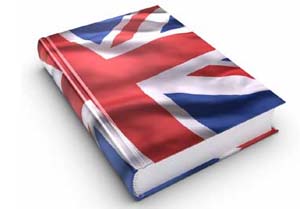 |
|
 |
|
| Visite: 1637 | Gradito: |
Leggi anche appunti:No LogoNo Logo They're the biggest companies of the world, they only buy something, UK economyUK economy The wealth of a country depends on how rich it is in factors of VerbiVerbi SIMPLE PRESENT: forma base ( terza persona si aggiunge la "s") |
 |
 |
MANHATTAN
Manhattan refers both to the Island of Manhattan which borders the lower Hudson River, and also to the Borough of Manhattan (one of The Five Boroughs of New York City), which includes the island of Manhattan itself, as well as several other smaller islands and a small portion of the mainland (see geography). The borough is coterminous with New York County, and addresses within the borough of Manhattan are typically designated as New York, NY. As of the United States 2000 Census, the population comprised 1,537,195 people, but the county is geographically among the smallest in the United States with only 23.7 square miles (61.4 km²) of land. With 66,900 people per square mile (25,800/km²), it is by far the most densely populated county in both New York State and the entire United States.
HISTORY
The name Manhattan derives from the word Manna-hata so written earliest in the 1609 log book of Robert Juet, an officer of the Dutch East India Company yacht Halve Maen or Half Moon. The ship was captained by Henry Hudson, who, in the service of the Dutch Republic, was (covertly) commissioned to seek a north-west passage to China. The Half Moon first entered Upper New York Bay on September 11, 1609, and sailing up the lower Hudson River, anchored off the tip of northern Manhattan that night. As emissary of Holland's Lord-Lieutenant Maurits he named the river he discovered after him; the Mauritius River.
A manuscript map of 1610 depicts the name Manahata twice, on the west as well as the east side of the Mauritius River, later named Hudson River, thereby referring to the tribes that dwelled at the mouth of the river as the Manahata Indians. In 1625, Johannes de Laet, Director of the Dutch West India Company wrote in his "New World": "The great North River of New-Netherland is called by some the Manhattas River from the people who dwell near its mouth; but by our countrymen it is generally called the Great River". In the 1630 edition he continues to write of "another fort of greater importance at the mouth of the same North River, upon an island which our people call Manhattas or Manhattans Island, because of this nation of Indians happened to possess the same, and by them it has been sold to the company". He thus confirmed that the island had been purchased in 1626 by Peter Minuit, the third director of New Netherland from the native Mannahatans for 60 guilders worth of trade goods (translated to about $24, which according to the Oregon State University website's estimated conversion factors (1665 is the oldest year given, so this is an approximation), is about the equivalent of $500-$700 American in todays' currency)[1].
It is generally assumed that the Italian navigator Giovanni da Verrazano explored New York Harbor in 1524 and that a few months later the Portuguese Esteban Gómez did the same. However, there is no evidence of any exploration, latitude calculations, surveying or mapping. There is only a vague textual description of having seen an estuary that may perhaps resemble Hudson's river. None of those navigators from other nations had penetrated well into the bay or explored the chief river substantiated with textual and visual evidence until the Dutch did so in 1609.
The province of New Netherland was settled in 1624 at Governors Island (the birth date of New York State), whereas the town of New Amsterdam on Manhattan Island was founded in 1625 (the birth date of New York City) by New Netherland's second director, Willem Verhulst, who, together with his council, had selected Manhattan as the most optimal place for permanent settlement. That year, in 1625, military engineer and surveyor Cryn Fredericksz van Lobbrecht laid out a citadel with Fort Amsterdam as centerpiece.
In 1664, the Duke of York, King Charles II, had resolved to annex New Netherland and consolidate it with his North American possessions in order "to install one form of government , both in church and state.to install the Anglican government as in Old England". He sent an expeditionary force composed of New Englanders and "reinforced by four royal ships crammed full with an extraordinary amount of men and warlike stores" and demanded New Netherland's surrender. Director General Petrus Stuyvesant and his council negotiated 24 articles of provisional transfer which gave New Netherlanders liberties and freedoms unlike those available to New Englanders and Virginians.
In October 1665, Stuyvesant reported that "many verbal warnings came from diverse country people on Long Island, who daily noticed the growing and increasing strength of the English, and gathered from their talk that their business was not only with New Netherland but with the booty and plunder, and for these were they called out and enrolled. Which was afterwards confirmed not only by the dissolute English soldiery, but even by the most steady officers and by a striking example exhibited to the colonists of New Amstel on the South Delaware River, who, notwithstanding they had offered no resistance, but requested good terms, could not obtain them, but were invaded, stripped, utterly plundered and many of them sold as slaves to Virginia".
Consequently, the negotiations assured that the legal and political tradition of tolerance as the basis of cultural diversity and pluralism since 1624 was perpetuated by the Articles of Transfer under English authority. Thus safeguarded, the notion of tolerance endured after conclusive jurisdictional establishment of English dominion over New Netherland in 1674, and through the formation of the United States of America, when it was reintroduced as a constitutional right under the Bill of Rights in 1791.
New Amsterdam's
significance, therefore, lies in the fact that it gave rise to what would become
the most diverse city in the world, and the nation's largest municipality
― itself a legal concept introduced, in
Having so saved the New Netherland culture from destruction, the political power of a minority among the majority was soon to transform, over time, the region from a utilitarian community based on the values of a republic and the Dutch language to a class society based on royal values and the English language. Hence, New York County is named in honor of the Royal Majesty of Great Britain, the Duke of York, later to become the Catholic James II of England after whom the City and State of New York were also named. In 1691, however, the Catholic religion was outlawed in New York by an act of parliament until 1783.
Manhattan skyline from Suffern,
New York,
From the latter half of the 1960s through most of the 1970s, Manhattan suffered from urban flight as the middle-class fled to the outer boroughs and suburbs due to an increase in crime. However, as with many other American cities, there was an increase in population growth in the latter part of the century due to a renewed interest in the urban lifestyle, a trend which began in the late 1980s and has continued to present day. It was thought that the September 11, 2001 attacks would initiate a new exodus from the City due to a fear of terrorism, but this has not come to pass.
ARTS AND CULTURE
A popular haven for art, the neighborhood of Chelsea in downtown Manhattan is widely known for its galleries and cultural events. The late 1970s popularized an ongoing 'pop art' movement in the city, in part due to Andy Warhol.
 |
| Appunti su: |
|
| Appunti Spagnolo |  |
| Tesine Francese |  |
| Lezioni Tedesco |  |